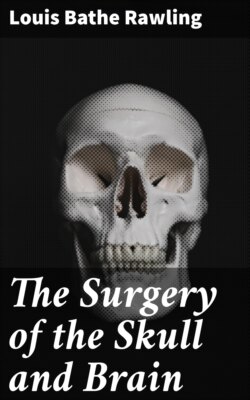Читать книгу The Surgery of the Skull and Brain - Louis Bathe Rawling - Страница 74
На сайте Литреса книга снята с продажи.
Treatment.
ОглавлениеWhen of inconsiderable size, and when intracranial connexions are absent, of doubtful existence, or of slight extent, the sooner the tumour is removed the better. The dura mater should not be opened unless absolutely necessary, in which case it should be carefully sewn up and the scalp-flap replaced without drainage.
When possessing deep and extensive connexions, careful dissection may still allow of the complete removal of the dermoid. It is impossible to foretell with certainty whether it is possible to remove the tumour until its basal portion is exposed. The operation may be a formidable one.
Some points in the differential diagnosis between
Cephaloceles, Dermoids, and Cephalhæmatomata
| Cephaloceles (congenital). | Dermoids. | Cephalhæmatomata. |
|---|---|---|
| Present at birth. | Present at birth. | Usually appears after birth. |
| In middle line, especially over occiput and base of nose. | In middle line, especially over anterior fontanelle. | Always to one side of the middle line, and usually over the parietal bone. |
| Firm or fluctuating. | Firm. | Fluctuation over central part only. |
| Perhaps translucent. | Not translucent. | Not translucent. |
| Perhaps pulsates. | Does not pulsate. | Does not pulsate. |
| Perhaps reducible, in whole or in part. | Irreducible. | Very slightly, if at all. |
| Perhaps swells up on straining. | No alteration. | Very slightly, if at all. |
| Perhaps associated with cerebral symptoms. | No cerebral symptoms. | No cerebral symptoms. |
| Gap in skull felt. | Depression in bone common, actual gap comparatively rare. | Deceptive raised margin, no actual central depression. |
